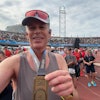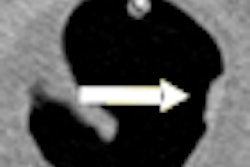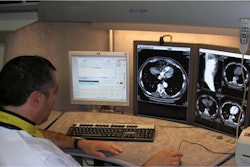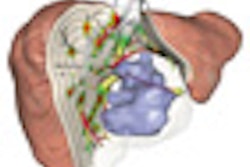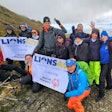
BRUSSELS - Reporting radiology cases from a home office requires a certain fiber: high-speed optical fiber of at least 20 megabytes per second (Mbps), to be exact.
A yearlong experiment in home reporting for 10 radiologists from the Brussels University Hospital (UZB) found no compromise in the quality of work with the home workstations, but short interruptions of the Internet connection are still a reality that can hamper the productivity of a radiologist.
Presented as an electronic poster at ECR 2011 in Vienna, the project was unusual for having as a primary end point not productivity but the satisfaction of the radiologists with the UZB system for remote reporting.
The researchers found radiologists tend to quit the centrally located medical center for regional hospitals closer to home because they are tired of rush-hour traffic jams on the heavily congested Brussels ring road. Enabling radiologists to work a half-day at home in order to commute during the off-peak hours has become critical to retain staff, according to the lead author for the poster, Filip Verhelle, manager of information systems for the UZB radiology department. Increasing the on-call availability of radiologists for consultation on emergency cases was a secondary project goal.
 Home office showing a radiologist on duty. "This integration of information, images, and reporting tools is unique in today's market," said Dr. Johan de Mey, head of the UZB radiology group. Image courtesy of Filip Verhelle.
Home office showing a radiologist on duty. "This integration of information, images, and reporting tools is unique in today's market," said Dr. Johan de Mey, head of the UZB radiology group. Image courtesy of Filip Verhelle.
Another feature of the UZB project that distinguishes it in the development of teleradiology is the full-scale remote radiology workstation, according to Dr. Erik Ranschaert, a radiologist at the Jeroen Bosch Ziekenhuis (JBZ) in the Netherlands, whose paper on "Teleradiology: Evolution and Concepts" is cited in the Belgium poster (European Journal of Radiology, September 24, 2010).
"Home reporting takes teleradiology one step further so that we can actually do the same work as we do in the hospital, making reports for examinations that are displayed in our worklist as it appears in the PACS," he explained. Where most teleradiology practices require only a good screen and a broadband connection, home reporting is a bit more complicated from a technical point as both RIS and PACS need to be accessible, an online dictating system is needed, and the reports produced need to be automatically linked to the correct images as in the hospital system, he added.
UZB installed a secure virtual private network and a no-compromise DICOM-capable workstation for each radiologist that included three monitors of 2 megapixels (MP) using a quad-core Intel technology, and remote access to a bilingual speech recognition server for the reading session. Mammography reporting was excluded from home reporting as the workstation does not include a 5-MP display.
Once up and running the disparity in bandwidth for different radiologists became a challenge. Diagnostic reviewing requires bandwidth in the order of 20 Mbps at the remote site, Verhelle said, with an average 500 Mb of data per study and a comparison of two studies requiring 1 GB of data.
"They need enough bandwidth to support active use of these images, such as scrolling through a CT examination fluidly," he noted.
Two radiologists fell below this threshold due to the distance between their home and the communication node of the Internet service provider. Verhelle is working on a scalable wavelet-based compression system for the retrieval and decompression of DICOM medical images at lower bandwidths to solve this challenge.
Later this year, the UZB system will be extended to a further four radiologists. As for applying the teleradiology capability to connect with other hospitals, Verhelle said if this is of interest, then he and his colleagues are open to the idea.
"We have had discussions recently," he said. "But when it comes to implementing the project, everything stops. I suspect the money is not going in the right direction."
Example of networking during one working day at home performed by four different radiologists
|
|||||||||||||||||||||||||||||||||||||||||||||||||||||||
| ADSL = asymmetric digital subscriber line |

